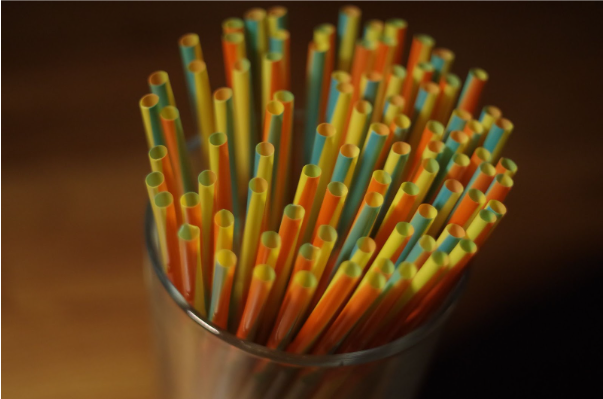
FMCG companies that sell juices and milkshakes in Tetra packs with attached straws are opting for the only other viable option of paper straws, with barely two and half months left to kickstart the plastic ban drive.
The Government’s ban on single-use plastic from July 1 has forced the fast-moving consumer goods (FMCG) companies that sell juices, milk, and shakes in small tetra packs with a plastic straw to shift their focus to paper straws. Since paper straw manufacturing is still a small specialized market, these FMCG companies will be required to import the paper straw for the time being. This will rack up prices and make the products more expensive.
Extension details on the ban
Since the plastic ban has had a direct hit on the FMCG manufacturers, they have requested for the deadline of July 1 to be extended for imposing the ban on plastic straws. Manufacturers of small packaged fruit juices and dairy products have stated that though imported paper straws will increase their manufacturing cost, it will not help them meet the industry standards.
Dabur India, the FMCG major and Industry body Action Alliance for Recycling Beverage cartons (AARC), has appealed for the deadline of July 1 to be extended by a minimum of two and a maximum of three years for a streamlined phase-out. Dabur CEO Mohit Malhotra has stated that the ban will have a huge impact due to the availability of limited alternate options available currently.
Substitute for plastic straws
Before scraping the plastic straws, the industry has to figure out replacement substitutes. FMCG has been working on biodegradable plastic straws, which can be good alternatives to the currently used plastic straws as they are environmentally friendly.
Biodegradable materials like paper are non-toxic and reduce a carbon footprint. However, the implementation and validation may take between nine to twelve months. The FMCG is also looking for other options like paper straws that need to be imported, but global availability is also in scarcity right now. AARC CEO Praveen Agarwal states that the production and sales will halt if the deadline is not extended by the Government, and the estimated loss will be approximately Rs 6,000 crore.
Plastic straws vs paper straws
Switching from plastic straws to paper straws is expensive but an environmentally friendly option. Plastic straws are being banned by the Government as they are a menace to wildlife, human well-being, and the environment. Plastic straws are not recyclable and are usually dumped in landfills which cause land waste or pollution and are virtually impossible to decompose. They break into microplastics which contaminate our ecosystem.
Paper straws break down into natural materials that leave a smaller footprint on the earth. They are easily compostable and hence cause minimal to no harm to the ecosystem. Paper straws made of pure paper will be biodegradable if left for some time with nature.
Cost implications & hiccups of switching over from plastic straws
Malhotra from Dabur expressed that importing paper straw will have cost ramifications on companies and will lead to revenue loss for the government treasury. This will prove to be in direct contrast to the spirit of the Government’s Atmanirbhar Bharat initiative.
AARC CEO Agarwal said that even though the industry supported the Government’s initiative, there could be a difference between loose straws and packaged integrated straws as the industry picks up and reuses more than 50% of the cartons and straws and is already committed to increasing it to 70% the following year.
GCMMF, the dairy co-operative that buys and sells products under the brand Amul, said that the substitutes for plastic straws are uneconomical. It also added that such straws account for less than 0.1 % of the total plastic consumption.
Following the new regulations, the manufacturers, importers, and brand owners have to give details of reuse certificates only from the registered recyclers together with the info of the sent quantity for end-of-life disposal latest by June 30 of next financial year, during the online filing of the annual returns.
Realistically, from a consumer standpoint, plastic has been a menace to society and human health. The packing industry must adopt these futuristic, green and recyclable options as quickly as possible while figuring out how to not pass the increase in costs to the average consumer. Climate change and pollution are real threats to human civilization in total which cannot be weighed against temporary inconveniences or capital losses.











